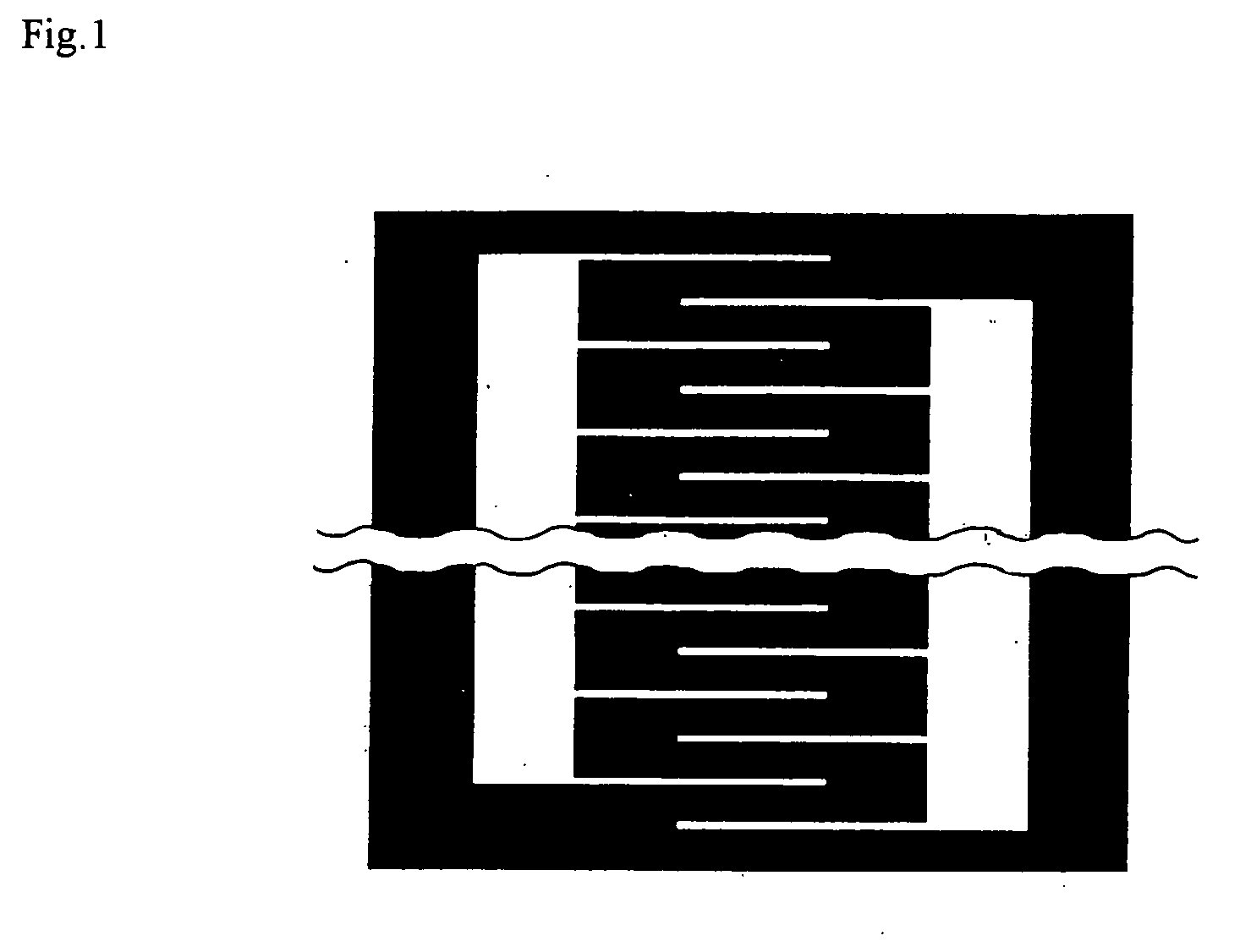Coated conductive particle coated conductive particle manufacturing method anisotropic conductive material and conductive connection structure
a technology of anisotropic conductive material and manufacturing method, which is applied in the direction of natural mineral layered products, cellulosic plastic layered products, transportation and packaging, etc., can solve the problems of defective conduction, short circuit and the like between adjacent electrodes, and difficulty in forming an insulating coating layer with a constant thickness, etc., to achieve superior connection reliability
- Summary
- Abstract
- Description
- Claims
- Application Information
AI Technical Summary
Benefits of technology
Problems solved by technology
Method used
Image
Examples
example 1
[0101] Insulating particles [1] were dispersed in distilled water under irradiation with ultrasonic wave to obtain an aqueous dispersion solution having 10% by weight of insulating particles [1].
[0102] In 500 mL of distilled water were dispersed 10 g of metal surface particles [1], and to this was added 4 g of aqueous dispersion solution of insulating particles [1], and stirred at room temperature for 6 hours. After having been filtered through a mesh-filter of 3 μm, this was further washed with methanol, and dried to obtain coated conductive particles [1].
[0103] When each of coated conductive particles [1] was observed under a scanning electronic microscope (SEM), only one coating layer was formed on the surface of each of metal surface particles [1] by insulating particles [1]. When the coated area (that is, the projection area of the particle size of each insulating particle) of the insulating particles with respect to an area of 2.5 μm from the center of the coated conductive ...
example 2
[0106] Insulating particles [2] were dispersed in acetone under irradiation with ultrasonic wave to obtain an acetone dispersion solution having 10% by weight of insulating particles [2].
[0107] In 500 mL of acetone were dispersed metal surface particles [1], and to this was added 4 g of acetone dispersion solution of insulating particles [2], and stirred at room temperature for 12 hours. After having been filtered through a mesh-filter of 3 μm, this was further washed with methanol, and dried to obtain coated conductive particles [2].
[0108] In coated conductive particles [2], only one coating layer was formed on the surface of each of metal surface particles [1] by insulating particles [2]. When measured in the same method as example 1, the coating rate thereof was 70%, and the interface bonding area was 15% of the surface area of the insulating particle. Moreover, when the state thereof after having been thermocompression-bonded between silicon wafers was observed under an SEM in...
example 3
[0110] Insulating particles [3] were dispersed in toluene under irradiation with ultrasonic wave to obtain a toluene dispersion solution having 10% by weight of insulating particles [3].
[0111] In 500 mL of toluene were dispersed metal surface particles [2], and to this was added 4 g of the toluene dispersion solution of insulating particles [3], and stirred at room temperature for 4 hours. After having been filtered through a mesh-filter of 3 μm, this was further washed with acetone, and dried to obtain coated conductive particles [3].
[0112] In coated conductive particles [3], only one coating layer was formed on the surface of each of metal surface particles [2] by insulating particles [3]. When measured in the same method as example 1, the coating rate thereof was 40%, and the interface bonding area was 5% of the surface area of the insulating particle. Moreover, when the state thereof after having been thermocompression-bonded between silicon wafers was observed under an SEM in...
PUM
| Property | Measurement | Unit |
|---|---|---|
| Fraction | aaaaa | aaaaa |
| Fraction | aaaaa | aaaaa |
| Temperature | aaaaa | aaaaa |
Abstract
Description
Claims
Application Information
 Login to View More
Login to View More - R&D
- Intellectual Property
- Life Sciences
- Materials
- Tech Scout
- Unparalleled Data Quality
- Higher Quality Content
- 60% Fewer Hallucinations
Browse by: Latest US Patents, China's latest patents, Technical Efficacy Thesaurus, Application Domain, Technology Topic, Popular Technical Reports.
© 2025 PatSnap. All rights reserved.Legal|Privacy policy|Modern Slavery Act Transparency Statement|Sitemap|About US| Contact US: help@patsnap.com


